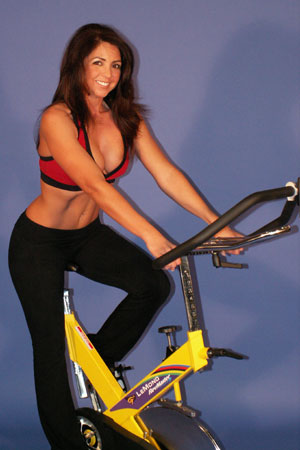
Exercise: Great Results From Strength Training Without Weights
While the owners of gym memberships and expensive in home exercise equipment would have the entire world believing otherwise, it is absolutely possible to burn body fat and build a lean and healthy body without a single piece of equipment or weights.
You read that right; you do not need an expensive gym membership or costly home exercise equipment to completely transform your body in the shortest period of time possible.
Strength training without weights provides many opportunities that gym memberships cannot: you will save time and money from not purchasing expensive gym memberships, or spending time driving to and from the gym.
Furthermore, bodyweight exercises are safer and easier to perform, but give you benefits machines and weights cannot.
For instance, you will greatly improve your strength-to-mass ratio by using bodyweight workouts. People will greater strength-to-mass ratios generally have a more lean and athletic appearance. Not only that, but they have much more "functional" bodies and capabilities compared to people who use machines.
However, if you want to get the best results in the least amount of time by strength training without weights, you absolutely must choose the best exercises.
EXERCISES:
Always choose the most effective exercises. Don't waste valuable time doing exercises that don't incorporate use of the largest amount of muscle mass.
Some of these exercises are:
Lower Body Exercises:
• Squats
• Bulgarian split squats
• Lunges
• One leg Romanian dead lifts
• One Leg Squats
• Step Ups
Upper Body Exercises:
• Dips
• Handstand Push-Ups
• Push-Up (and all variations)
• Pull-Ups (and all variations)
• Inverted Rows
• Chin-Ups (and all variations)
Core Exercises:
• Side Planks
• Hanging knee raises
• Reverse Crunches
• Planks
Total Body Exercises:
• Jumping Jacks
• Burpees
• Sprints
• Squat Thrusts
How to Set Up Your Workout:
• Choose one exercise from the lower body group, two from the upper body group (a push and a pull movement), one from the core group, and one from the total body group.
• Get the most out of each exercise by using perfect form and performing full reps. For example, is you choose squats, make sure you squat down until the top of your thighs are parallel with the ground. If you don't go down at least that far, you are not doing the exercise properly and won't get the best results.
• Alternate these two techniques:
1) Perform the reps as fast as possible while maintaining control and perfect form.
2) Perform the reps slow and controlled.
This will provide variety and a different training stimulus.
• To further increase intensity, try to keep the rest periods to a minimum, only resting as needed. Over time, try to decrease your rest periods.
• Always remember: correct form will yield more results than carelessly performed exercises.
• To further increase intensity, try to keep the rest periods to a minimum, only resting as needed. Over time, try to decrease your rest periods.
• Always remember: correct form will yield more results than carelessly performed exercises.
SAMPLE EXERCISE CIRCUIT:
• Bulgarian Split Squats: 12-15 each leg
• Decline Push-ups: 10-20 reps
• Inverted Rows: 10-20 reps
• Side Plank: 20 seconds each side
• Burpees: 10
Apply the tips from the section above. For example, the first time through this circuit, perform the reps as fast as possible while maintaining control and perfect form. The second time through, perform the reps very slow and controlled.
Try to keep the rest periods to a minimum to keep the intensity elevated. Rest as you need to, but over time try to decrease your rest breaks.
Furthermore, you can perform the circuits one of two ways:
1) Perform as many circuits as possible in 10-20 minutes
2) Perform a total of three to six circuits
THREE IMPORTANT TIPS FOR LONG TERM SUCCESS:
1) Decrease the length of breaks between circuits each time you exercise.
2) Increase the number of circuits whenever possible.
3) Increase the number of repetitions for each exercise when possible.
4) Use more challenging exercises. Examples: clap push-ups, one leg squats, jump squats, chin-ups, etc.
That sample circuit workout will help you burn off body fat, build lean muscle, and improve your physique better than most traditional gym workouts.
Best of all, you are going to save time and money in the process.
It doesn't get better than that: more results in less time.

